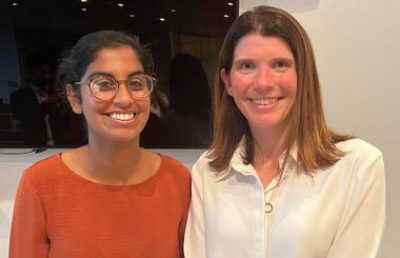We must increase entry points into the voluntary sector

At the Charity Forum event last week Noama Chaudhry, Degree Apprentice, joined Sarah Vibert, CEO at NCVO, as our keynote speakers. Noama shares her experience and views:
A lot of the focus on diversity in the voluntary sector has rightly been on race, disability and also more recently on class. I also want to add age to this mix and suggest an intersectional approach to diversity, because to be truly representative of the communities we serve and create sustainable change, the voluntary sector must also attract more young people.
I was 19 at the start of my apprenticeship. Three years later, I am still the youngest person in my organisation. With only 6% of employees in the voluntary sector being under 25 and less than 2% being 16-19, there is a significant lack of representation of younger generations in the workforce. Meanwhile, a quarter of staff in the voluntary sector are over 55. It is the same in charity governance too – just 3% of trustees are under 30.
In comparison, the private sector has double the proportion of people under 25 than the voluntary sector. A major cause of the better representation is the abundance of opportunities in the private sector compared to the voluntary sector.
This means that the voluntary sector needs to create more entry points, such as alternative routes to typical education and provide work experience for students at school. An example of a school leaver programme is what I’m doing, a degree apprenticeship, where an apprentice can work at an organisation and study for a bachelor’s (or master’s degree) at the same time, paid for by their voluntary sector organization using the apprenticeship levy. This provides a more practical way to gain skills, provide support and gain a greater understanding of the sector.
The government has also recently introduced T-levels, which is a similar idea where the student gets 3-A-levels whilst working at your organization. Paid internships, graduate programmes and industry placements, all also fit into giving university students experience in the working world, which could be but aren’t currently very prevalent in the sector.
In this way, young people can learn knowledge, behaviours and skills that will help them navigate the future workforce, which is something that cannot be taught in a classroom but can only come through practical experience.
This is an effective way to attract and retain staff at a younger age by providing them with opportunities and a way to get their foot in the door, something that I have often heard is difficult to do particularly in the voluntary sector.
I would also say it is a low-cost high value return. For example many larger voluntary organisations need to pay an apprenticeship levy anyway and it adds capacity your organisation. Plus, these schemes are highly competitive and attract talent as there is not a lack of interest from younger people wanting to join the sector, but a lack of entry points from voluntary organisations.
By having these programmes, it increases social mobility and representation for the sector which means people from a wider variety of backgrounds are able to join, creating a more intersectional approach to diversifying the workforce. Indeed, in the scheme I am on, 80% of my cohort are from minority backgrounds and all were under 30 when they joined. These schemes are therefore an excellent way to enable new ideas and new approaches with a shift in perspective - at the moment whole pockets of society lack a voice in the sector so it is very important for cultural change. So, I hope to see the voluntary sector grab these opportunities and implement them in their organisations in the future and create a more diverse workforce.
If you would like to attend future Charity Forum events and join the discussion please sign up HERE. It is free to join and attend.

